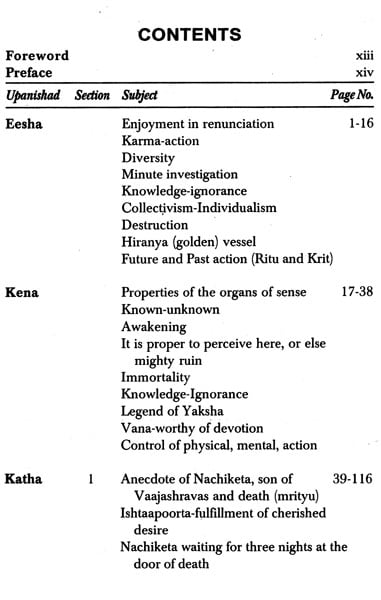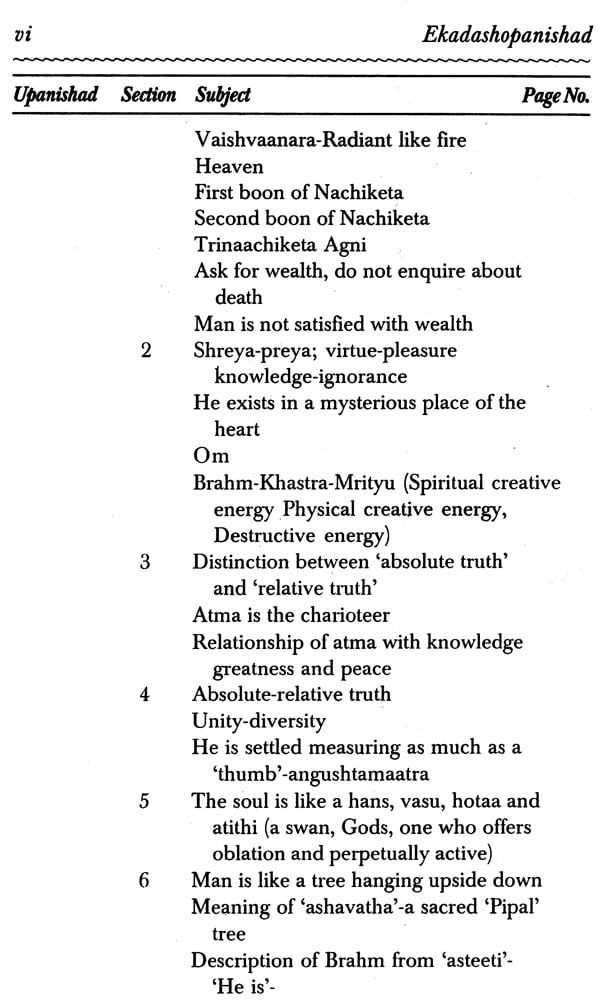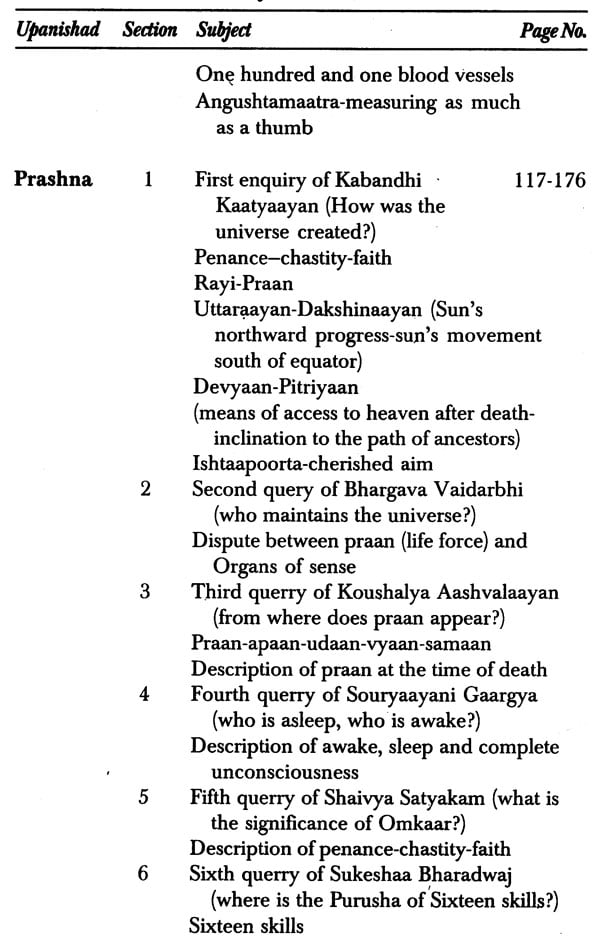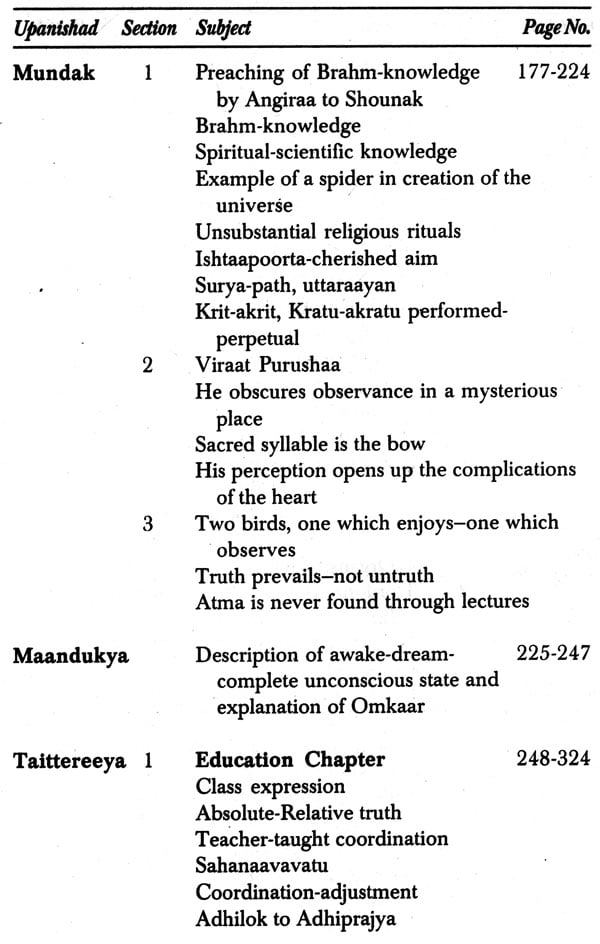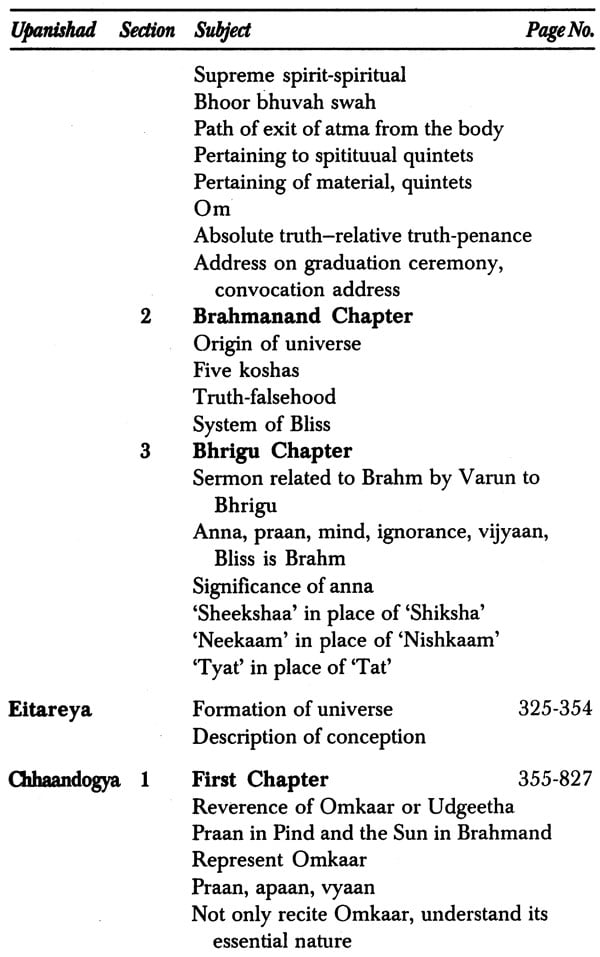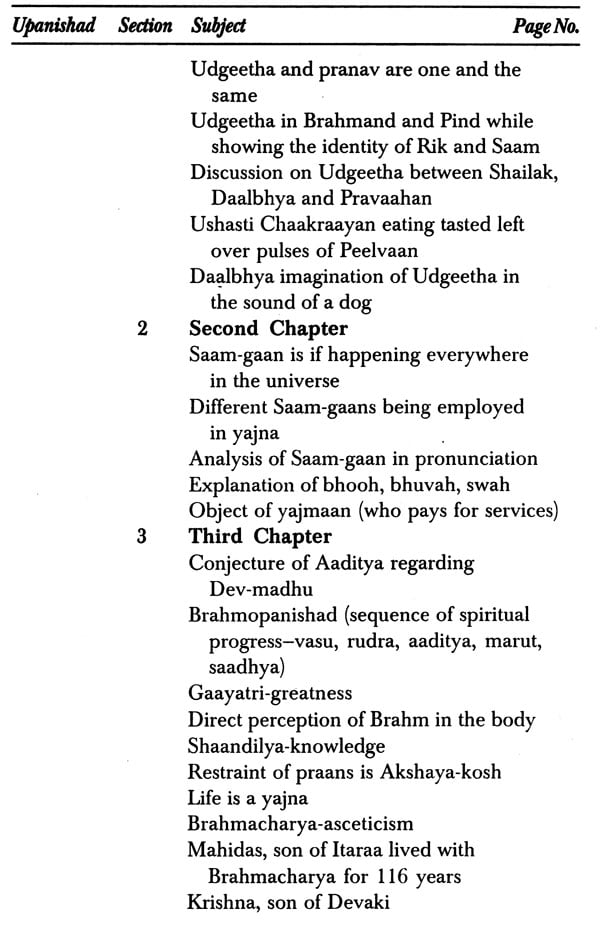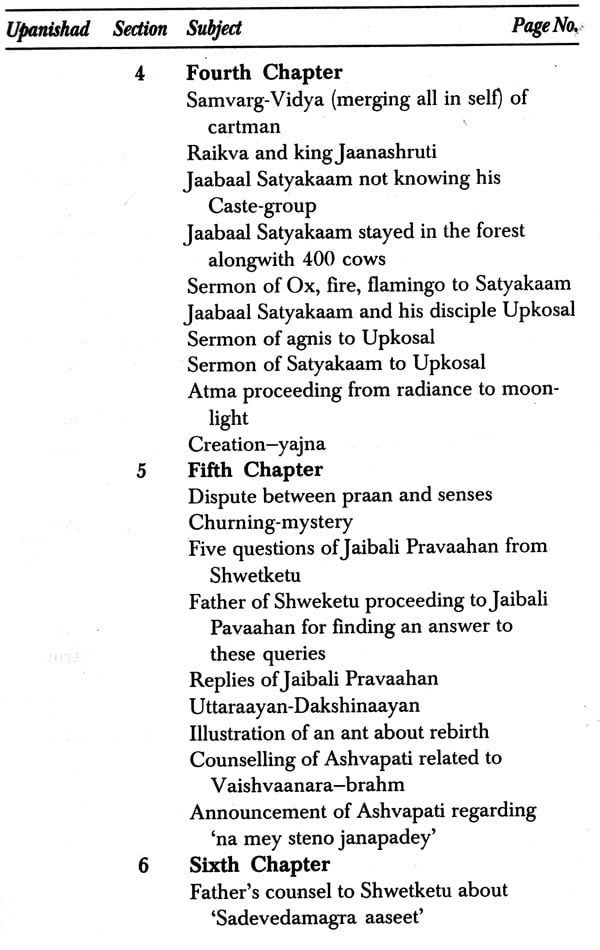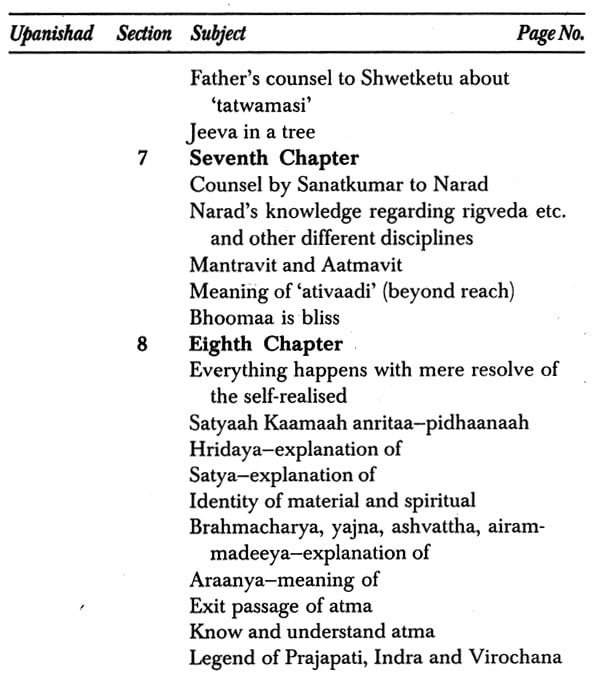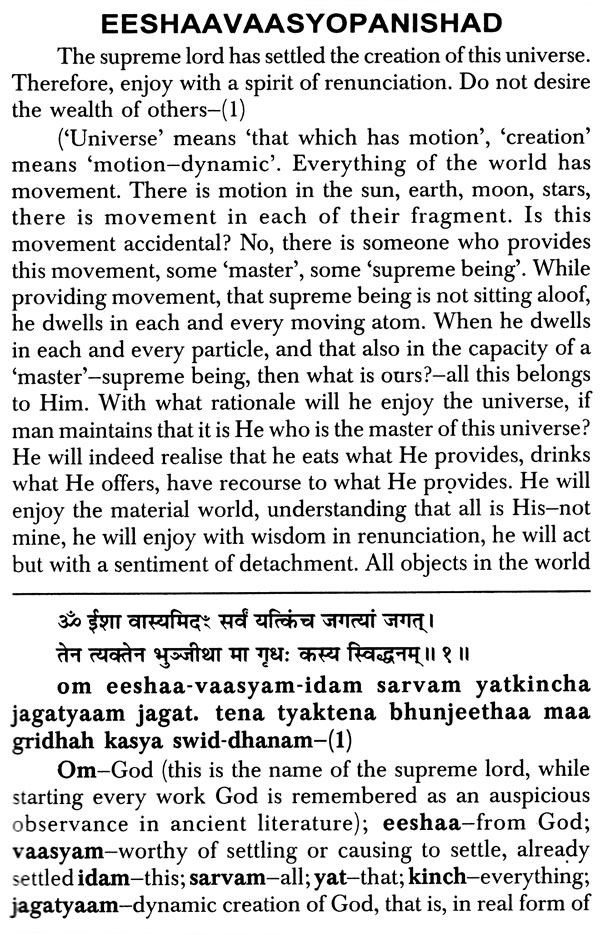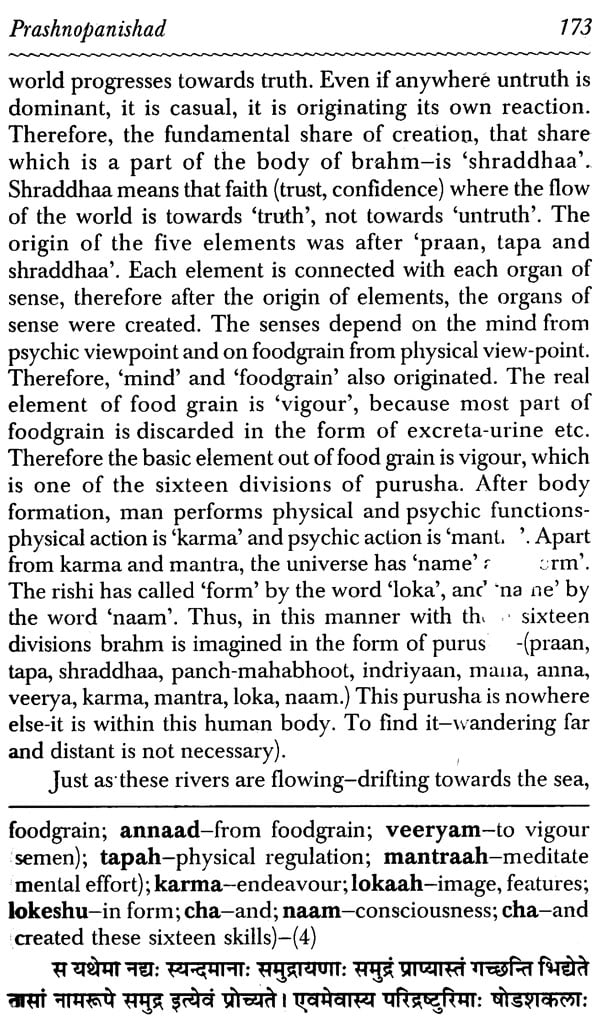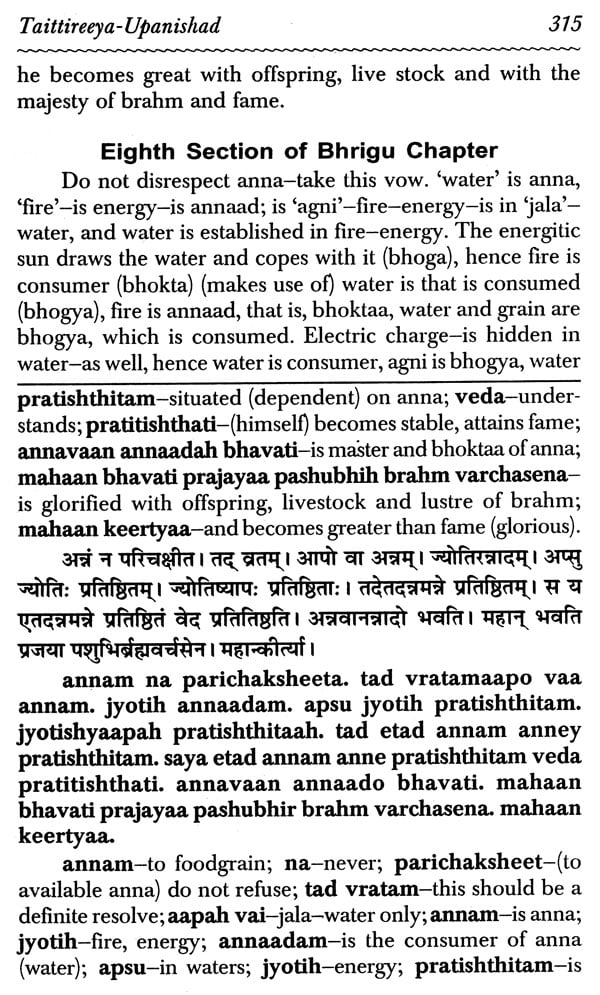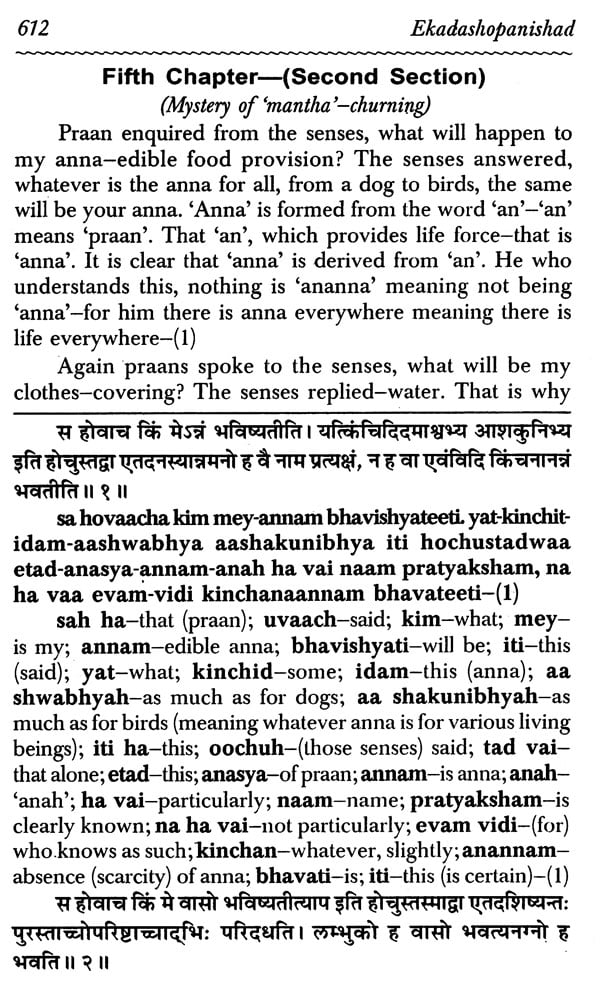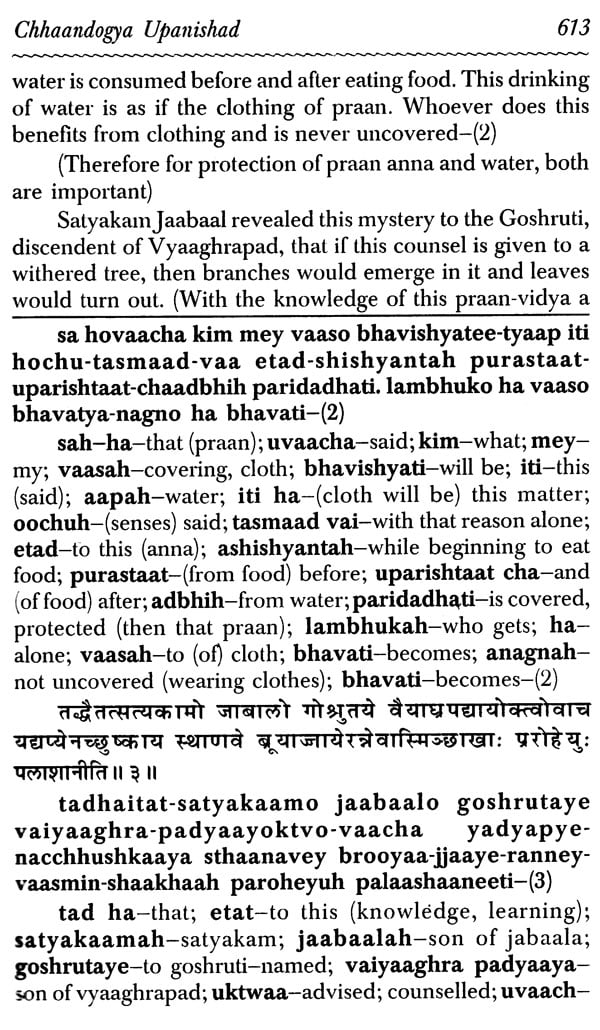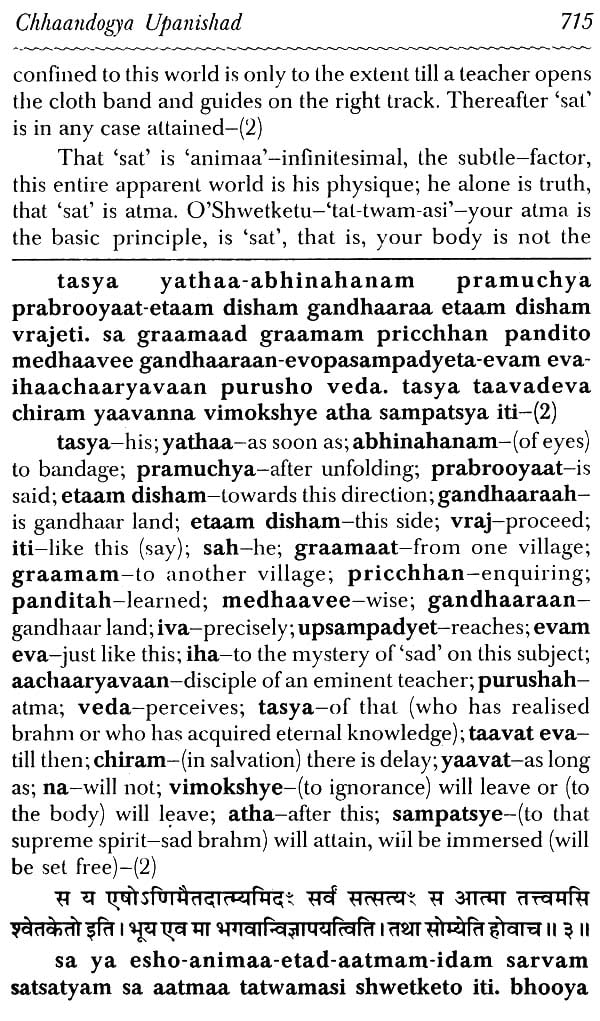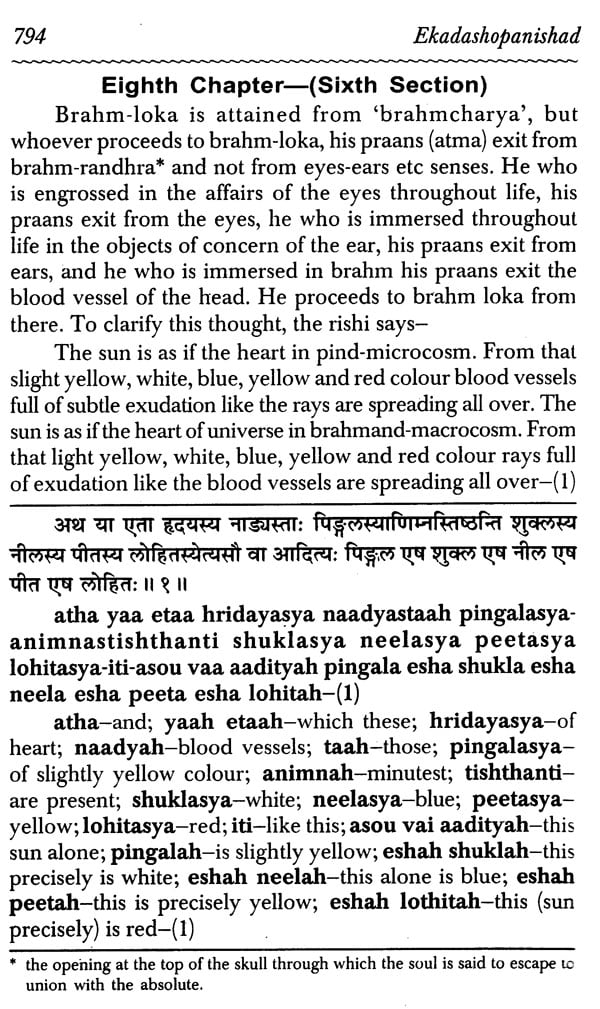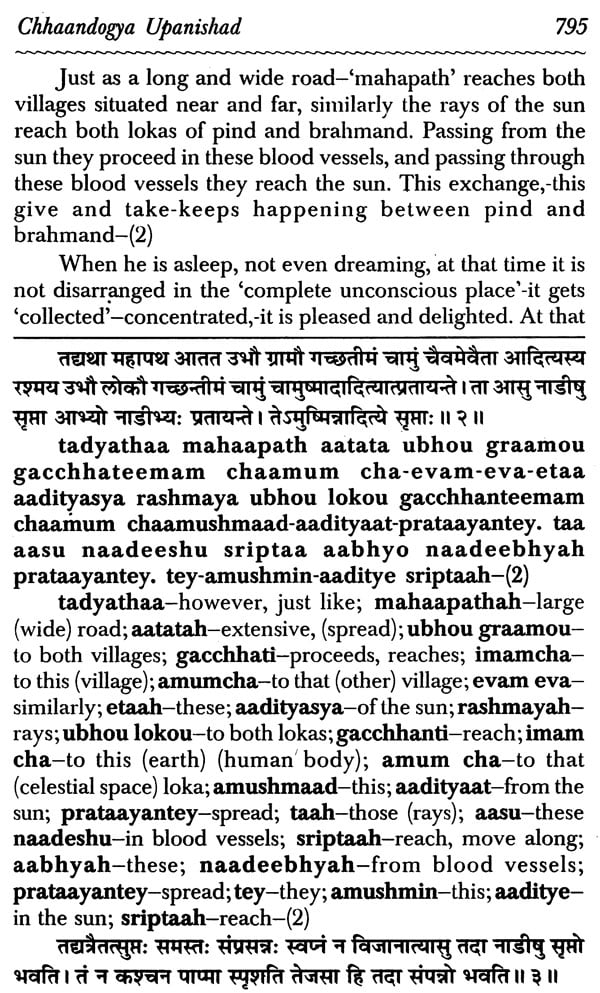
The Upanishad (Part-1): Arya Samaj Interpretation (An Old and Rare Book)
Book Specification
| Item Code: | NAR534 |
| Author: | Dr. Satyavrata Siddhantalankar |
| Publisher: | Vijay Krishna Lakhanpal, New Delhi |
| Language: | Sanskrit Text With English Translation |
| Edition: | 2012 |
| Pages: | 856 |
| Cover: | HARDCOVER |
| Other Details | 9.00 X 6.00 inch |
| Weight | 1.13 kg |
Book Description
Prof. Satyavrata Siddhantalankar (05-03-1898 - 13-09-1992) Prof. Satyavrata Siddhantalankar who was nominated to the Parliament of India by Dr. S. Radhakrishnan, holds a doctorate (Vidya Martand) degree of the Gurukula University, Haridwar. He has been its Vice-Chancellor for two terms extending over a period of ten years. Gurukula Kangri was founded by Swami Shraddhanand for the cultural revival of ancient Indian ideas with an emphasis both on Eastern and Western doctrines.
Besides being an orator of outstanding versatility and ability Prof. Satyavrata authored more than twenty books on Education, Sociology, Psychology, Anthropology and Homoeopathy. Some of his works are used either as reference books or as text-books at graduate and post-graduate levels.
He was awarded the All-India Mangala Prasad Prize for his outstanding literary work in Sociology by Hindi Sahitya Sammelan of Allahabad. In 1978 he presided of the international Arya Mahasammelan held in Nairobi.
His commentary on the Upanishads has forward by Dr. Radha Krishnan, his exposition on the Gita is prefaced by late Shri Lal Bahadur Shastri (Ex-Prime Minister of India). His book 'Heritage of Vedic Culture' is a very original exposition of the Vedanta coupled with different aspects of Indian Philosophy.
His wife Chandrawati Lakhanpal was also an educationist and author of repute in her own right having written books on 'Status of Women' (Hindi) and Educational Psychology. She was awarded Mangala Prasad Prize of her outstanding work in Educational Psychology.
Both actively participated in the freedom movement and were members of Parliament.
Dr. S. Radhakrishnan Human progress is built on acts of faith. The acts of faith on which our civilisation is based are to be found in the principal Upanishads. When we are now setting out on a new era in the life of our country, Ave must go to the Upanishads for our inspiration. They contain the principles which have moulded our history from its earliest dawn. Where we have failed, our defeat is due to our infidelity to the teachings of the Upanishads. It is, therefore, essential for our generation to grasp the significance of the Upanishads and understand their relevance to our problems. The texts of the Upanishads are not to be read simply. They are meant for meditation. Take, for example, the very first verse with which this book opens
Ishavasyam idam sarvam yat kin cha jagatyam jagat
tena tyaktena bhunjitha, ma griadhah kasyasvid dhanam.
(Know that) all this, whatever moves in this moving world, is enveloped by God. Therefore find your enjoyment in renunciation; do not covet what belongs to others.
It makes out that this world is a perpetual procession of events where everything supersedes another. But this passing show is not all. It is informed by the Supreme Spirit, enveloped by God. We should not look at the world merely from the outside as a succession of events but perceive beneath it the burning intensity of significance which penetrates the succession. Every occasion of the world is a means for transfiguring insight. By renouncing everything we become the lords of everything. When we feel that the whole universe is inhabited by God, we become one with the universe. In the worlds of Traheme : "the sea flows in our veins....and the stars are our jewels".
When all things are perceived as sacred, there is no room for covetousness or self-assertion.
I am pleased to find that Professor Satyavrata who was for some years the Vice-Chancellor of the Gurukul University, Hardwar, and is well known as the author of many important works in Hindi on Ancient Indian Culture, Education, etc., has now written an exhaustive account in Hindi of the Upanishads. He gives the text and a commentary. I have no doubt that this book will be widely read by students of Hindi for their own profit and pleasure.
The Upanishads are such stars in the vast firmament of ancient India's constellation of stars whose lustre has served as a guide to the traveller since thousands of years amidst the dense clouds in dark nights through the journey of life. Where should I go, which is my right path, which is the right lane amongst many which will lead me to my goal - this question, as it arose in the mind of Nachiketa, or as in the mind of Maitraee - still comes up today in the mind of every young man-woman. Nachiketa and Maitraee got a different reply than the answer of today, and therefore they chose a different path. It is not that they could not follow that path which is generally accepted in today's materialistic-world. They were free to follow the path of materialism, but they rejected it by saying-‘na vittena tarpaneeyo manushyah'-ultimate satisfaction cannot be achieved from wealth-tavaiva raajan maanusham vittam,this wealth cannot remove my innermost restlessness, keep it with you-`amritatwasya tu naashaasti vittena'-wealth can bring comfort and enjoyments of the world, it cannot bring immortality which the spirit (atma) is looking for! This message of the immortal atma reaches our ears who are stuck in the marshy land of materialism. A time comes in ,our life as well when we get transformed, we look-up towards God, we search for the eternal not the transcient, we also understand-‘na vittena tarpaneeyo manushyah'-‘amritatwasya tu naashaasti vittena'-but we grasp very late, we understand when we cannot gain from this philosophy and put to practical use in our life. Which materialistic person, spending his entire life in the glitter of the world, does not see one day that all this was a mirage, nothing of this was everlasting, but when he woke up, what was left in him? Accepting it as perpettual he spoke lies, indulged in misconduct, spread tyranny, shed blood, caused ruin;-but all this was a complicated puzzle-the real substance; that objective which he was looking for, which he was searching since birth after birth, which would nearly come in his grasp yet slip away,-he could not even feel it! This perception becomes real in every one's life sometime or the other. It comes very early in life of a spiritual person, and very late in a materialistic person, but, whether late or early, this harsh brutal truth-whether we agree or not, does not spare anyone. Those who had grasped this basic truth, they declared this truth to all, they declared-‘iha chedavedeet atha satyamasti, na chedavedeet mahatee vinashtih'-if this is achieved here in this birth, so far so good, or else there is total ruin. The sages and seers of ancient India who proclaimed this and sighted that truth, while accepting this material world as real but masked behind it-its soul, the ultimate reality; they had sighted that supreme spirit and named that as 'brahm'. To draw attention of the world to the knowledge that emerged was named 'brahm-vidya'. That voluminous literature which interpreted and enunciated 'brahmavidya' was known as the 'Upanishad'.
It is important to understand the perspective of rishis (sages) of the Upanishads in order to understand the Upanishads. Just as every matter today is either spoken or written keeping in view the material perspective, similarly the authors of the Upanishads spoke and wrote keeping in view the spiritual perspective. It was their submission that the universe is a reality, but there is another reality which is a lot more than this-with the power of that reality alone, the appearance of this universe looks real. True reality (sat) is not this but He. He alone is brahm, He alone is atma, perceiving Him alone makes a man divine. It was their belief that whosoever grasps this view point he perceives 'brahm' as a perceptible reality, just like as we see this universe as a perceptible reality. This does not mean that one can actually see directly with the eyes. This means ...hat one directly looks at this universe alone with eyes, however, each object of the universe is seen like a screen, behind this screen, :alder its cover, one looks at the master of the screen as well. Just as a materialist has a realistic objective perception, similarly the rishis of the Upanishads also have a realistic dispassionate objective perception. Yaajyavalkya has repeatedly said that this world exists, but it is transcient. This is the ultimate substance of the world-it exists-we cannot deny this, this is not everlasting, we cannot deny this as well. On this realistic view-point, the Upanishad has always stated-this is not real, He is real, the senses are not real-the mind (mana), vital breath-life (praan), spirit (atma) is real, the ultimate truth. Who can deny that this view-point of the Upanishad is not hypothetical but a true perspective, such a viewpoint where both material and spiritual thinkers have to bow down.
**Contents and Sample Pages**
